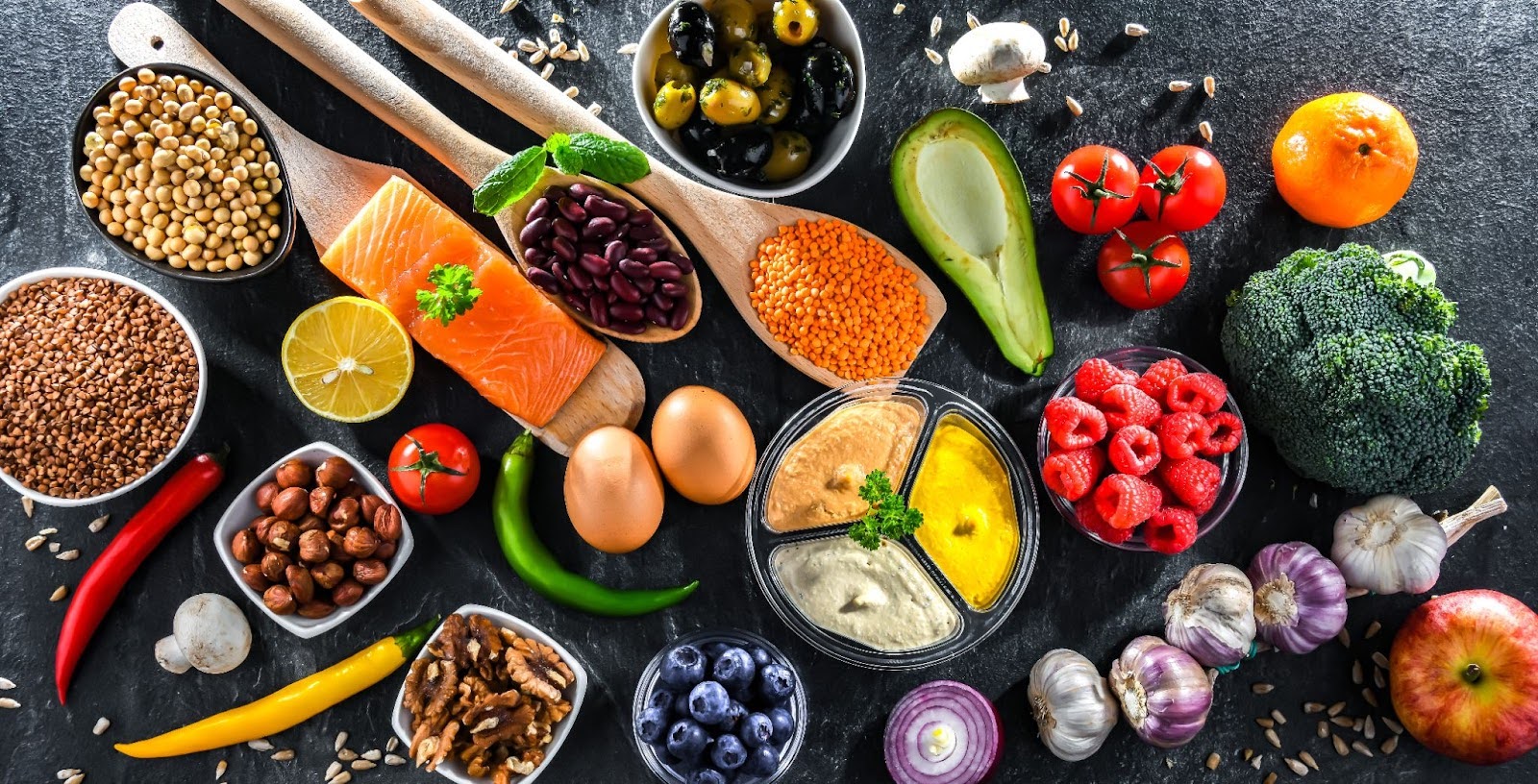
Hey hey Sweaters! I LOVE this topic on taste buds. I like to get to know my body more, how bout you? Today I’m going to discuss:
- Anatomy of taste buds 2. Differences between men and women regarding taste buds 3. Focus on sweet tooths! Yeah you… 😉
Some differences are a matter of taste…literally. At brunch you order a vegetable omelet with turkey bacon while your best friend asks for blueberry pancakes and yogurt. You likely don’t give your meals a second thought, but you don’t realize just how many things impact whether you have a sweet or salty tooth and tend to favor crunchy or smooth foods. Our gustatory receptor cells (that’s science lingo for taste buds) perceive four basic tastes: sweet, salty, sour, and bitter. When you chew on your food and it crumbles into little bits, those bits eventually break into four basic shapes.
When something tastes sweet, it is because the bits are round and large in their atoms. Salty is isosceles triangle bits on your tongue. Bitter is spherical, smooth, scalene and small, while sour is large in its atoms, but rough, angular and not spherical.
You have about 10,000 buds, and not all are located on your tongue: Some are found on the roof of your mouth and others in your throat, which explains why medicine is so unpleasant going down the hatch. Each taste bud has a receptor and is connected to sensory neurons that relay information about a particular basic taste to the brain. And while everyone’s taste buds are similar, they are not the same.
Studies show that our ability to taste begins in the womb. Amniotic fluids transfer flavors to the fetus, which eventually will begin to develop different tastes at different rates. These first exposures stick with you after birth.
Some people are born with very sensitive taste buds for sweet, while others are born more sensitivity to salty, sour, or bitter.
Genes that code your taste and smell receptors all play a role in how sensitive you are to a taste. The higher your sensitivity, the more likely you are to turn your nose up at that flavor. Same goes for textures. Any sensation such as crunchy or smooth is perceived by pressure receptors in the tongue and lining of the mouth that connect to sensory neurons that send ‘like’ or ‘dislike’ messages to the brain. The more receptors you have that fancy crunchy foods, the more you’ll gravitate toward things like nuts, crusty bread, and ice cubes. If you find yourself to be very sensitive to taste and texture you might be a Supertaster.
It has been found that some people have more than the normal number of taste papillae (and taste buds). They are distinguished by their increased density of fungiform papillae and their extreme sensitivity to the chemical n-propylthiouracil (PROP).
| % of population | *density of taste papillae cm-2 | |
| supertasters | 25 | 165 |
| normal tasters | 50 | 127 |
| non-tasters | 25 | 117 |
Fascinating, right?! There are some home tests you can do to test what kind of taster you are. I won’t bore you with the details. If you are interested in testing click here.
But DNA isn’t everything; you also learn to favor certain foods through childhood experiences. When we are exposed to any stimulus like food, the chemistry in our brain changes in some way. If your grandfather always gave you butterscotch candies when you were young and you associated this gesture with love, you develop neural connections in your brain that favor sweets; that is, you acquire a sweet tooth. Thanks Gramps.
Experts speculate the opposite may apply too, so a violent bout of food poisoning after a hamburger at an elementary school birthday party could turn you away from the backyard favorite for life. And while repeated exposure may help you acquire a taste for beet juice, you’ll likely never be able to drastically alter your taste preferences since you can’t alter your genes.
Are men and women the same with taste?
In the last decade, researchers have started exploring how taste preferences differ between the sexes. It seems women may have a lower threshold for sour, salty, and bitter flavors, perhaps because of our better sense of smell, and that could explain why women tend to report loving sweets and chocolate more than men do. At different points of a woman’s menstrual cycle, their hormones cause certain taste buds to be more or less sensitive.
Why do I crave a sweet treat after a meal?
Regular consumption of foods high in sugar and fat leads to neurochemical changes in the brain, hardwiring you to crave these types of foods. Food cravings often are a result of habit and association. If you have always had something sweet after a meal, you do not feel closure unless you meet that need. Sweet treats often are associated with rewards and positive feelings, so you feel good when you eat them.
Another cause of post-meal sweet cravings has to do with the mood-elevating brain chemical, serotonin. When serotonin is low, feelings of depression and sadness set in. You crave something sweet because sugars and simple carbohydrates prompt the body to release serotonin, improving your mood. Uneven blood sugar levels cause you to crave sweets after a meal as well. If you fail to balance macronutrients at your meals and eat primarily carbohydrates, your blood sugar levels soar, only to drop suddenly shortly after the meal. Your body seeks the “high” again, causing you to crave sugar.
Deprivation also can set you up for cravings. If you are following a strict diet and avoiding all sweets, you can make cravings worse by denying your desire to satisfy your sweet tooth.
When people tell me they have a big sweet tooth or are “addicted to sugar”, I think it is imperative to get a sense of what else might be going on for them. Almost always, people crave sugar for one of 5 reasons:
- Lack of protein in the diet
- Lack of fat in the diet
- Lack of fiber in the diet which helps us feel fuller and provides nutrients that our body needs
- Dehydration
- Emotions or stress connection
I cannot tell you how helpful it is to make sure meals (even snacks) are balanced with these major “macro nutrients”: fat and protein, particularly at the morning meal. The body is so smart and when it doesn’t feel satiated (which protein and fat do for us) it automatically goes for the thing that will give us the most amount of energy with the least amount of effort and that is almost always some kind of refined carbohydrate: cookies, chips, bread, cake etc.
Getting fiber-rich complex carbohydrates (like whole grains/seeds: quinoa, kasha, vegetables, fruits) can also help to insure that blood sugars don’t get overly elevated which very often come crashing down making one crave the kinds of foods that caused the elevation in the first place.
Water/fluids are also supremely helpful with sugar cravings. We often mistake our own dehydration for an insatiable craving. Next time you feel a sugar craving, try having a huge glass of water first and see if the urge dies down at all. If not, take a look at the meals you had earlier. If they seem balanced with fat, fiber and protein, next take a look at your stress or emotional state. When we are stressed, hormones often get released that make us crave high energy (calorie) dense foods. Additionally, many of us associated sweets with reward and pleasure. Sugar stimulates the reward center of the brain so it makes sense that we desire that experience when feeling low.
Another strategy that I have also found to be extraordinarily helpful to those sugar cravers is to add new flavors to the diet: spices, herbs, new foods, foreign fruits, different vegetables and even condiments. When we stimulate our palate with new tastes, we stop craving the old. The more frequently we eat the same foods, the more likely we crave the same old stuff. But when we add something totally new, our taste buds get pretty excited about the experience and this helps to result in more feelings of satiety. Sprinkle cinnamon on cereal, throw basil into a smoothie, toss some curry into those eggs, try out a new vinegar on your salad, roast your seeds and nuts.
Experiment! I promise that you will see a marked difference in your sugar cravings. There are so many naturally sweet foods to try as well: fruits both fresh and dried, sweet veggies like beets, carrots, sweet potatoes, winter squashes, and even onions (especially caramelized). Roast a veggie with some cinnamon or the Indian spice “garam masala” and you may even feel like you had dessert. If I need a sweet sweet taste I may use erythriotl instead of sugar or honey on my yogurt or cereal. It’s a safe, low glycemic, tasty sugar alcohol (and the only sugar alcohol that doesn’t cause GI distress).
Toodles you tasty treats!
MJ
Resources: Proust Was a Neuroscientist by Jonah Lehrer, ScienceDaily: Chocolate Is The Most Widely Craved Food, But Is It Really Addictive? David Geffen School of Medicine at UCLA, Shape Magazine,
Read more: http://www.dailymail.co.uk/health/article-2086949/Sweet-sour-salt-savoury-bitter-AND-fat-Scientists-discover-tongue-sixth-sense-lipids.html#ixzz3uWnHNGte , http://sciencemags.blogspot.com/2010/07/why-do-you-crave-sugar-salt-and-fat.html









Comments - 0